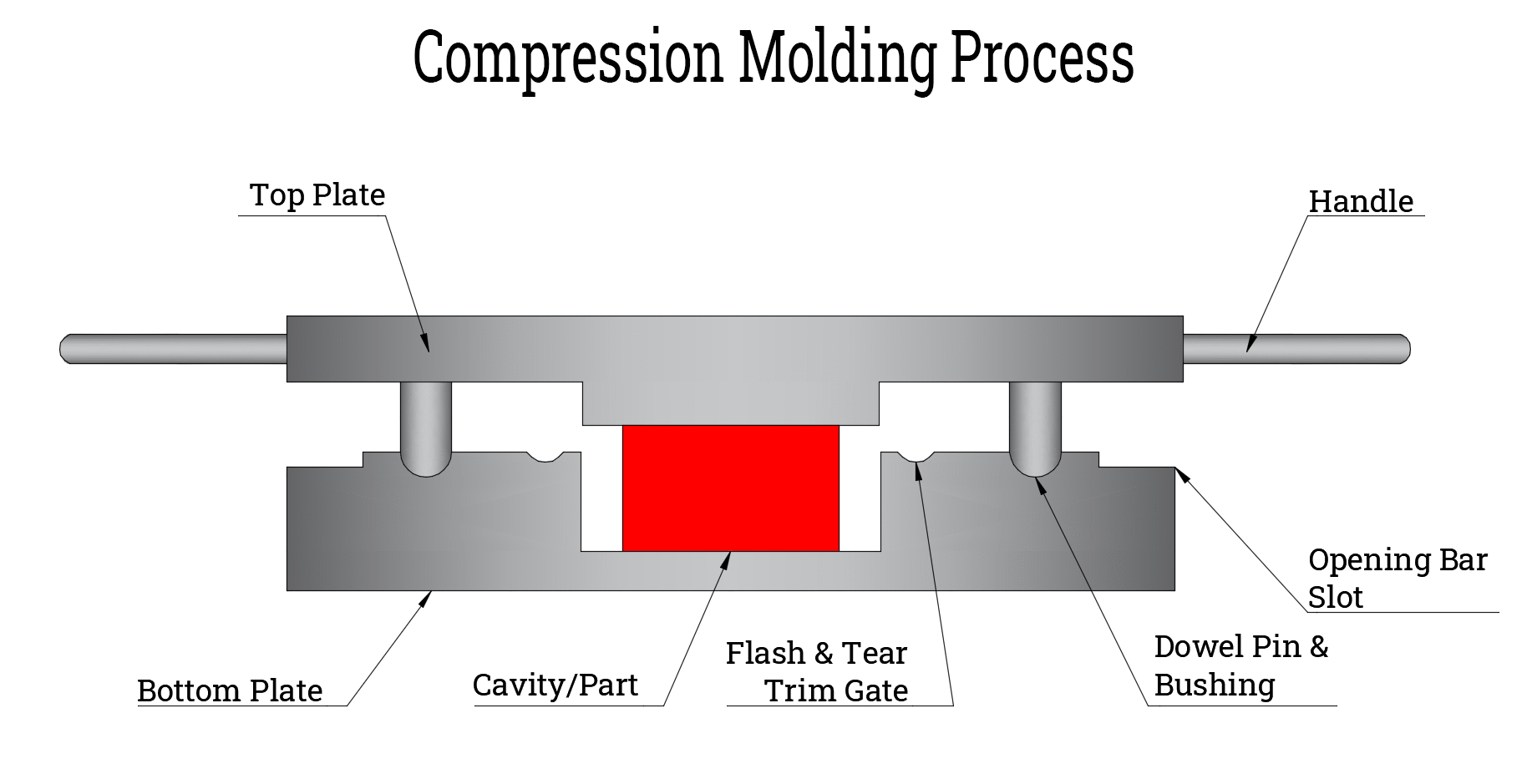Rubber Compression Molding
Compression Molding, also known as Silicone Compression Molding, Rubber Compression Moulding and Compression Forming, which is the process of placing a given amount of prepare & uncured solid silicone rubber material into a mold cavity, then close the mold, applying both heat and pressure to the solid silicone and allowing it to fill the cavity. When the cavity is filled, excess pre-form material spills out into overflow grooves, when the time is up, the mold will open, then demolded the silicone rubber.

How does rubber compression molding work?
To complete the compression molding process, the steps are as follows:
Make mold tools - prepare steel material, complete the product & mold design
Prepare raw materials - Selected the type of material you want to use and calculate the proper amount of material. If too much material, excess material will seep out of the cavity and result in big flash which would be difficult to remove.
Prepare raw materials - Selected the type of material you want to use and calculate the proper amount of material. If too much material, excess material will seep out of the cavity and result in big flash which would be difficult to remove.
Placing prepare raw material - Place the prepared raw material in the center of the bottom mold.
Compress Molding part - Close the mold tool, apply both heat and pressure, and wait for the part to form.
Demould - Remove the molded silicone rubber products fr
Tear trimming & Quality Inspection - Resin flash around the edges/ holes must be manually cut off or removed.
Rubber compression molding advantages
Compression molding is cost economic than rubber transfer molding and LSR injection molding, and the compression molding process is quite simple when compared to LSR injection molding. (It is a low-cost process and can be used for both low & high volume production.)
Short set-up time, easy to change material’s hardness & colors quickly.
Compression Molding is the only way to produce silicone products at Marble Colors.
The tolerance can be controlled at 0.02-0.1mm by using good steel material, good located pins, and good mold-making equipment.
Compression Moulding has more material options: Compression molding is suitable for many kinds of silicone rubber materials, as parts can remain pliable after the curing process. The most common materials include common silicone, food grade silicone, medical grade silicone, natural rubber, EPDM , Neoprene Rubber, Nitrile Rubber, etc.
Rubber compression molding disadvantages
Because of the mold structure & compression molding way, it is hard to achieve non-flash effect by located pins & mold-making equipment.
Material Wasted due to the flash
Hard to achieve automation unless the product structure is quite simple & production volume is large. When flash (the extra resin that escapes between two parts) occurs, it must be manually trimmed, thus slowing down production efficiency. Additionally, we can not re-use the excess material, which creates more waste.
Higher Human Capital Investments: As previously mentioned, flash is removed manually on compression molds, which generates higher labor costs.
Slower Cycle Time: The time needed to start and repeat the sequence of operations is between 1-6 minutes for compression molds; it is a much slower cycle time than injection molding.
